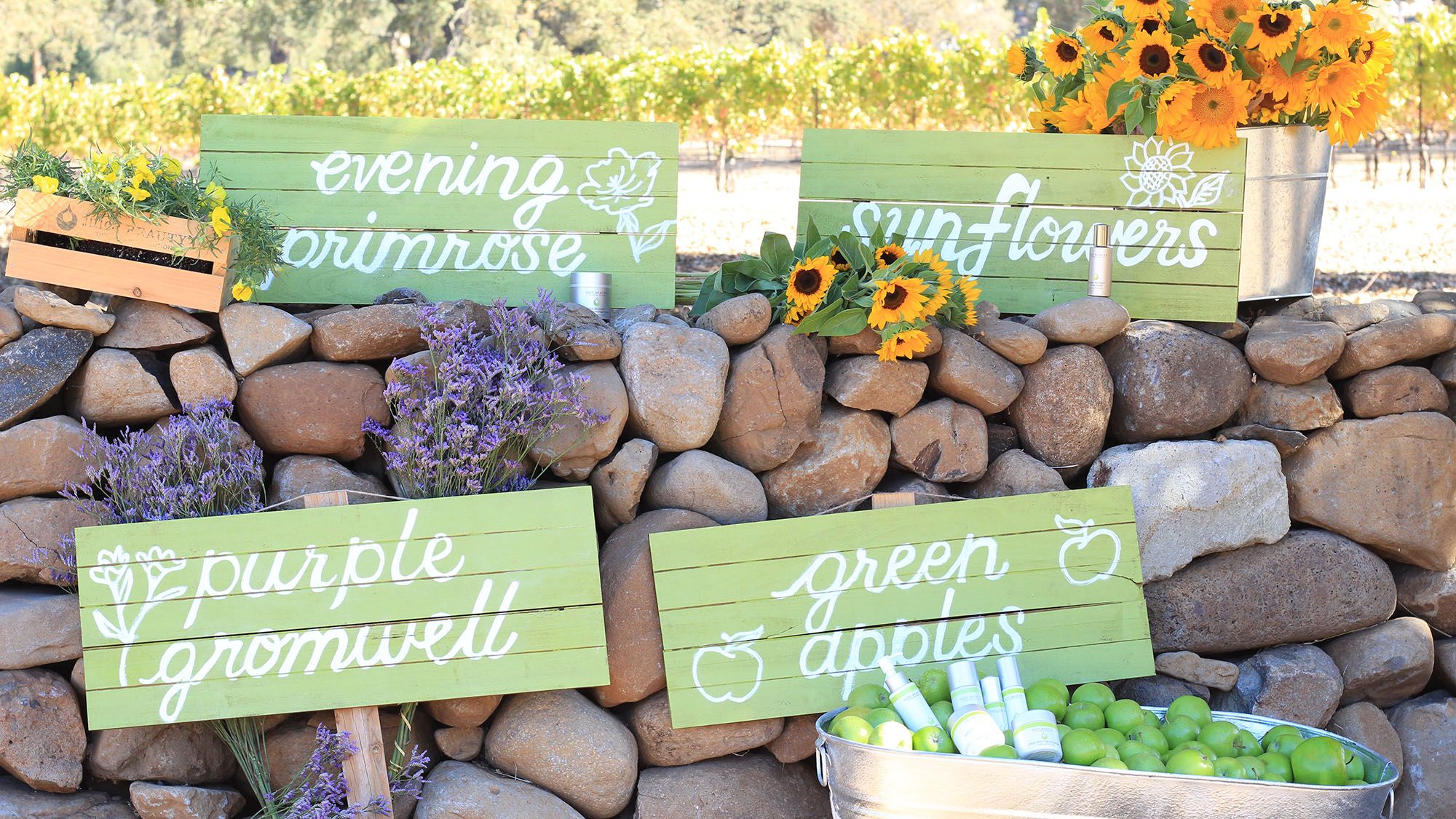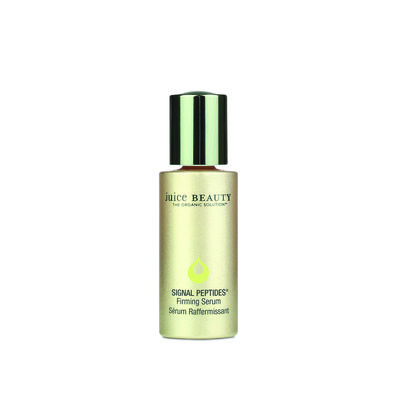Juice Beauty's Ingredients Come From the Same Place as Your Fave Chardonnay
A visit to California wine country showcases the source of organic beauty—and the science behind it.

Juice Beauty’s Marin County headquarters resemble an enormous greenhouse. The building is furnished sustainably, and where there aren’t vast windows, the walls are decorated with snapshots of Gwyneth Paltrow: wellness guru and the company’s creative director of makeup. Everything invokes a health-minded, West Coast lifestyle—even the brand’s name, coined for the proprietary juice blends that serve as the base of every product in the line.
“Every drop feeds your skin—no cheap or unhealthful fillers,” says founder Karen Behnke, describing her mission to replace beauty’s standard ingredients with super-charged organic alternatives. In addition to maintaining USDA Organic certification, Juice Beauty has a list of the “Unworthy Thirty” ingredients it will never use because of their potential toxicity. Instead, its chemists use plant derivatives and pigments to achieve serious results—and starting this spring, some of those will come from the company’s own backyard.

'Just some of the flowers and produce that will be grown on the brand’s farm.'
In Sonoma, only an hour away, Juice Beauty has leased land on a vineyard, where it’s in the process of planting raw materials, including green apple trees, sunflowers, and sacred lilies alongside the grapevines. Behnke gives me a tour, and I’m careful where I step—the rows between the vines are covered with a mix of bell pepper, mung beans, and barley to enrich the soil for optimal pH levels.

'Juice Beauty Signal Peptides Firming Serum, $110'
After the crops are grown and harvested, they’ll be weighed and purified by an organic fruit processor and sent to the company’s labs for production. The latest offering from these facilities is the Signal Peptides Firming Serum, a patent-pending formula that contains plant lipids from sunflowers to improve hydration and cell renewal and rice peptides to tighten skin. The products I test this morning offer the same efficacy: A citrus gel cleanser removes my eye makeup with ease, and the anti-wrinkle moisturizer soothes my flaky airplane skin with aloe vera and primrose. A personal favorite: the impossibly delicate eye mask, made from pressed algae and infused with arnica to quell inflammation.
Afterward, we venture to the historic Vallejo-Casteñada Adobe for a farm-to-table lunch—in an electric Tesla, no less. Scorched brush and ashen trees mottle the mountainside, an unnerving disturbance of an otherwise serene view. Thankfully, most of Sonoma’s grapes were spared in the wildfires that plagued the area last fall. “It’s harder to burn a vineyard than it seems. The soil is so moist that it can stop the flames,” says our host, topping off our glasses of Cabernet.
This tasting is as informative as it is indulgent: The same malic acid that turns a California white into a tart, bold masterpiece inside its barrel is a natural source of alpha hydroxy acids, which gently exfoliate and clear pores in the brand’s new Green Apple Brightening Emulsion. It feels as if Sonoma’s exports are all connected. I purchase a bottle: a creamy Chardonnay aged to perfection in French oak...you know, for research.
This story appears in the April issue of Marie Claire, on newsstands now.
Get exclusive access to fashion and beauty trends, hot-off-the-press celebrity news, and more.
Taylore Glynn is a former beauty and wellness editor for Allure. Previously, she served as beauty and health editor at Marie Claire and Harper’s Bazaar, and her work has appeared in Refinery29, Town & Country, Compound Butter, and RealSelf. She holds a master's degree in English and Creative Writing from Monmouth University. If you need her, she’s probably at the movies, braising a chicken, or evening out her cat eyeliner.